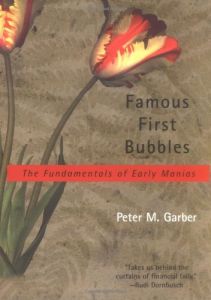Join getAbstract to access the summary!

Join getAbstract to access the summary!
Peter M. Garber
Famous First Bubbles
The Fundamentals of Early Manias
MIT Press, 2000
What's inside?
When rare tulips bloomed in old Holland, the tulipmania bubble flowered and burst, leaving economic myth behind.
Recommendation
During the collapse of the so-called Internet bubble, the legendary Dutch fiscal intoxication with tulips, called tulipmania, was widely cited as a lesson from history. The financial press hyped stories of deluded Dutch farmers who mortgaged all their worldly possessions to purchase a single prize tulip bulb, only to meet financial ruin when the bubble inevitably burst. Economist Peter M. Garber dug into history, and found that most of the common wisdom about the tulipmania was false. So, if you ever wondered how Dutch investors could have been so foolish, there is a simple answer: they weren’t. Famous First Bubbles clearly evolved from a series of academic papers but, nonetheless, the book is entertaining. The primary focus on the tulip bubble makes the sections on the Mississippi and South Sea Bubbles seem like afterthoughts. getAbstract.com recommends this to iconoclasts who enjoy debunking historical legends and to bubble watchers everywhere.
Summary
About the Author
Peter M. Garber is a global strategist at Global Markets Research at Deutsche Bank and Professor of Economics at Brown University
















Comment on this summary